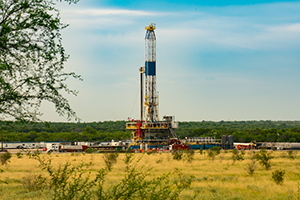Children in Pennsylvania living near unconventional oil and gas developments at birth were two to three times more likely to be diagnosed with leukemia between the ages of 2 and 7 years than children who did not live near this oil and gas activity, after accounting for other factors that could influence cancer risk, a novel study from the Yale School of Public Health finds.
The registry-based study, published by Clark et al in the journal Environmental Health Perspectives, included nearly 2,500 Pennsylvania children, 405 of whom were diagnosed with acute lymphoblastic leukemia.
More on Fracking
Acute lymphoblastic leukemia (ALL) is a type of leukemia that arises from mutations to lymphoid immune cells. Although long-term survival rates are high, children who survive this disease may be at higher risk of other health problems, developmental challenges, and psychological issues. Unconventional oil and gas development, more commonly referred to as fracking (short for hydraulic fracturing), is a method for extracting gas and oil from shale rock. The process involves injecting water, sand, and chemicals into bedrock at high pressure, which allows gas and oil to flow into a well and then be collected for market.

Photo credit: Getty
For communities living nearby, unconventional oil and gas development can pose a number of potential threats. Chemical threats include, for example, air pollution from vehicle emissions and well and road construction, and water pollution from hydraulic fracturing or spills of wastewater. Hundreds of chemicals have been reportedly used in unconventional oil and gas injection water or detected in wastewater, some of which are known or suspected to be cancer-causing. The paucity of data on the association between unconventional oil and gas and childhood cancer outcomes has fueled public concerns about possible cancer clusters in heavily drilled regions and calls for more research and government action.
“Unconventional oil and gas development can both use and release chemicals that have been linked to cancer, so the potential for children living near unconventional oil and gas [sites] to be exposed to these chemical carcinogens is a major public health concern,” said the study’s senior author, Nicole Deziel, PhD, MS, Associate Professor of Epidemiology at the Yale School of Public Health.
“Studies of unconventional oil and gas exposure and cancer are extremely few in number. We set out to conduct a high-quality study to further investigate this potential relationship,” added Cassandra Clark, PhD, the study’s first author and a postdoctoral associate at the Yale Cancer Center. “Our results indicate that exposure to unconventional oil and gas may be an important risk factor for ALL, particularly for children exposed in utero.”
Drinking Water May Be an Important Exposure Pathway
The study also found that drinking water could be an important pathway of exposure to oil and gas-related chemicals. The authors applied a new exposure metric in this study that they call “IDups” (which stands for “inverse distance to the nearest upgradient unconventional oil and gas well”). This means that the researchers identified unconventional oil and gas wells that fell within a child’s watershed area—the zone from which a drinking water well serving their home would likely draw water—and calculated the distance from the home to the nearest of those unconventional oil and gas wells. Unconventional oil and gas wells falling within the watershed area are expected to be more likely to impact the home’s drinking water supply, they said.
“Previous health studies have found links between proximity to oil and gas drilling and various children’s health outcomes,” said Dr. Deziel. “This study is among the few to focus on drinking water specifically and the first to apply a novel metric designed to capture potential exposure through this pathway.”
This work adds to a growing body of literature on unconventional oil and gas exposure and children’s health used to inform policy, such as setback distances (the required minimum distance between a private residence or other sensitive location and an unconventional oil and gas well). Current setback distances are the subject of much debate in the United States, with some calling for setback distances to be lengthened to more than 305 meters (1,000 feet) and as far as 1,000 meters (3,281 feet). The allowable setback in Pennsylvania, where the study was conducted, is 500 feet, or 152 meters.
“Our findings of increased risk of ALL at distances of 2 km or more from unconventional oil and gas operations, in conjunction with evidence from numerous other studies, suggest that existing setback distances, which may be as little as 150 feet, are insufficiently protective of children’s health,” Dr. Clark said. “We hope that studies like ours are taken into account in the ongoing policy discussion around unconventional oil and gas setback distances.”
Disclosure: For full disclosures of the study authors, visit ehp.niehs.nih.gov.

